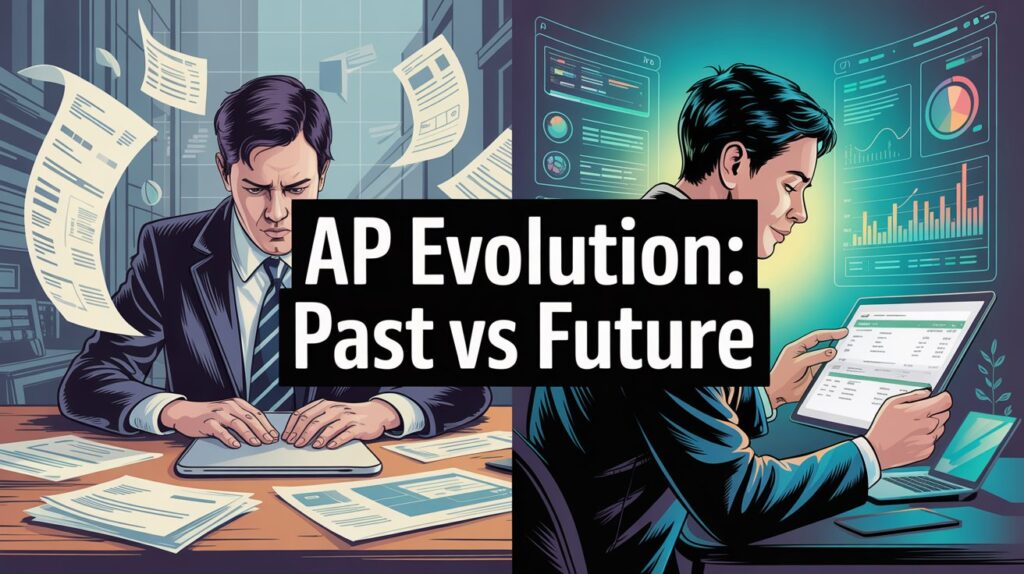It’s the second week of the month. You’re reviewing last month’s AP performance: invoices processed, average approval times, and percentage paid on time. Everything looks fine on the surface. But you’re still unclear on why your DPO dropped or which vendors triggered the spike in last-minute payments.
This isn’t a knowledge gap – it’s a timing gap. You’re solving last month’s issues while this month’s are already piling up.
For years, Accounts Payable has relied on metrics that look backward – cycle time, exception rates, cost per invoice. These metrics help you understand what happened, but they do nothing to prepare you for what’s coming.
On paper, they create the illusion of control. In reality, they keep finance leaders stuck in a reactive loop, constantly playing catch-up.
Why Backward-Looking Metrics Are Holding You Back
Let’s say your invoice approval time increased by two days last month. That’s useful to know – but not when it’s too late to do anything about it. Delays have already disrupted your cash flow. You’ve missed early payment discounts. Your suppliers are annoyed.
That’s the problem with traditional AP reporting. It confirms what went wrong, but only after the damage is done. For large organizations, this delay isn’t just frustrating – it’s costly.
To break the cycle, AP needs to move from hindsight to foresight.
From Reaction to Prediction
The goal isn’t to build fancier dashboards or pull data faster. The real shift happens when AP starts using data to predict what’s likely to go wrong – and gives you the time to act before it does.
Imagine knowing which invoices will get stuck in approvals next week or which vendors are most likely to delay your cash flow this quarter. That’s the power of predictive AP. It moves the function from reacting to problems to preventing them entirely.
The Three Pillars of Predictive AP
When AP stops looking in the rearview mirror and starts using real-time insights, it evolves from a transactional unit into a strategic partner. This transformation rests on three key pillars:
Pillar 1: Anticipate Cash Flow
Instead of static reports that tell you how much you spent last month, predictive systems show you what’s coming next. They can model upcoming cash outflows based on invoice aging, supplier behavior, and approval stage delays.
A Fortune 500 company used this approach to predict liabilities 30–60 days in advance. The result? They optimized their payment schedule and saved over $1.2 million a year. More importantly, they made informed decisions in real-time – not in hindsight.
Pillar 2: Automate High-Value Decisions
Today’s AP automation does more than just eliminate manual data entry. It acts like an intelligent assistant, helping you prioritize what matters most.
Instead of spending hours chasing down approvals, your team sees which invoices are likely to cause delays or which ones qualify for early-payment discounts. One global company reduced approval delays by 70%, saving over 40 hours a month – time they redirected to strengthening supplier relationships and analyzing spend. This is automation that supports better decision-making, not just faster processing.
Pillar 3: Turn AP into a Strategic Lever
When AP teams can predict vendor payment behaviors and model cash positions accurately, they start contributing to bigger conversations – like treasury planning, short-term borrowing, and risk management.
In a volatile economy, that kind of insight is gold. AP becomes more than just a cost center. It becomes a source of intelligence for CFOs to make agile, informed decisions across the business.
The Technology That Makes It Possible
None of this is wishful thinking. Modern accounts payable platforms like HighRadius platforms combine AI, real-time data ingestion, and intelligent workflows to make predictive AP a reality. These systems don’t just digitize invoices – they understand them. They learn from approval patterns, detect bottlenecks before they happen, and guide your team on what to act on next. This is the shift from information to insight. And it’s happening now.
Industry Momentum
According to analysts at Ardent Partners and APQC, top-performing AP teams are up to 3X more likely to use AI and predictive analytics. These teams are ahead of deadlines, faster at resolving exceptions, and more effective at managing working capital. They’re not just processing invoices – they’re shaping financial strategy.
Conclusion: From Recordkeeping to Foresight
The days of reporting on “what just happened” are coming to an end. Today’s AP leaders want to know what’s likely to happen next – and what they can do about it.
It’s not about catching up anymore. It’s about staying ahead.The new question isn’t “How did we do?”
It’s “What’s our next best move?”

